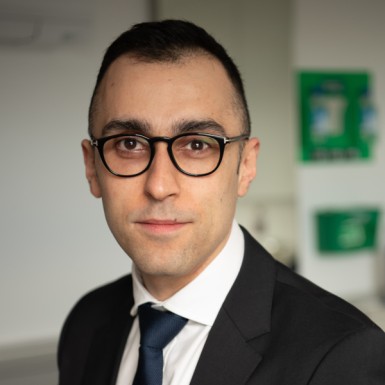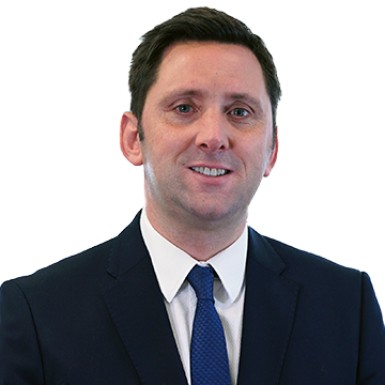At Kensington Medical, we offer a broad range of facial cosmetic procedures to help you look and feel refreshed.
A lower facelift or jowl lift can help turn back the clock, giving you a more youthful appearance.
It may help with:
Many of our patients choose to have a lower face lift or jowl lift surgery because it can target these concerns in a single procedure.
The technique adds back volume to the cheek area, contours the cheek and lifts and tightens the skin around the jawline effectively getting rid of jowls and creating a defined jawline.
When you look better, you feel better—it’s that simple. The procedure is carried out as a hospital day case so that you can return home on the same day. There is only minor discomfort and a quick recovery time.
If you feel that your appearance detracts from your quality of life, a lower facelift or jowl lift may be right for you. Keep reading to learn more about this life-changing procedure at Kensington Medical.
A lower face lift, sometimes called a jowl lift, is a surgical procedure that improves the appearance of the lower face and the lower jawline by removing excess skin and various toning up of underlying muscles. The surgery aims to create a more youthful appearance by restoring the face's natural contours.
It uses various techniques. Our GMC specialist registered plastic surgeons will tailor the procedure to your specific needs and desired results targeting the facial areas of concern.
If you want to find out if you are suitable for a lower facelift to target the jowl and lower face contact us.
Jowls are a common concern for many individuals, particularly as they age. A jowl is a sagging or drooping of the skin and tissue in the lower face, typically along the jawline.
Jowls can be caused by a combination of factors, including genetics, weight gain, and the natural ageing process. As we age, the skin and muscles in the face begin to lose their elasticity and firmness, leading to a sagging or drooping appearance. Jowls can also be caused by excess fat in the neck and chin area, which can contribute to a double chin or sagging jawline.
A jowl lift is a surgical procedure designed to rejuvenate the appearance of the lower face by tightening loose skin and removing excess fat. The benefits of a jowl lift include:
A more defined and youthful jawline
Reduced appearance of sagging skin and jowls
Improved facial contours and overall appearance
Enhanced self-confidence and self-esteem
Long-lasting results, up to 10 years, this of course depends on many factors allowing for general ageing, such as genetics, health and diet, exercise and sun exposure.
During your lower face lift consultation, our expert facial plastic surgeon will discuss all the benefits in more detail so you know what to expect. You will see before and after photos of a jowl lift. Discuss time lines and dates so you know exactly what to expect.
The plastic surgery procedure begins with small incisions hidden in the hairline. Our skilled plastic surgeon then separates the skin from the deeper tissues of the face and re-drapes it, they may remove excess skin and tighten the underlying muscles. The incisions are then closed with dissolvable stitches.
Compared to other surgical procedures for facial rejuvenation, such as a facelift, a jowl lift specifically targets the lower face and neck, providing significant and lasting results.
The ideal candidate for a lower facelift or jowl lift is someone who is in good physical health and has realistic expectations for the surgery results. Most of our patients are over the age of 40, through to 50’s and 60’s and are noticing signs of ageing, such as wrinkles, sagging skin, loss of definition in the jawline, and are interested in tightening sagging skin.
A lower facelift focuses on the lower two-thirds of the face, while a full facelift addresses concerns in the upper half and the lower face. A lower facelift is less invasive than a full facelift procedure and will have a shorter recovery time.
A lower facelift can provide significant skin tightening benefits, effectively reducing the appearance of sagging skin.
The SMAS facelift is a type of full facelift that focuses on the superficial musculoaponeurotic system (SMAS), a layer of connective tissue in the face. A lower facelift only addresses concerns in the lower two-thirds of the face and does not involve the SMAS.
Find out what facelift is right for you.

A deep plane facelift is a type of full facelift that repositions the deeper layers of the face. A lower facelift only addresses concerns in the lower two-thirds of the face and does not involve the deeper layers.
A mini facelift is a less invasive version of a full facelift that uses smaller incisions. It can only address concerns in the lower face, while a lower facelift can address problems in the lower two-thirds of the face.
Find out what facellft will benefit you. Our surgeons will advise on the best options for your face, contact us here.
The recovery time for a jowl lift can vary depending on the individual and the extent of the procedure. However, most patients can expect to experience some swelling, bruising, and discomfort in the treated area. This can be managed with pain medication and ice packs. We advise patients to rest and avoid strenuous activities for 1-2 weeks after the procedure. A mini facelift, which is a less invasive version of the jowl lift, may have a shorter recovery time, lasting under a week.
As with any surgical procedure, there are risks and complications associated with a jowl lift or lower face lift. These can include:
Severe pain or discomfort
Infection or bleeding
Scarring or keloid formation
Asymmetry or unevenness
Nerve damage or numbness
Our plastic surgeons will discuss all of the risks and complications with you in consultation to determine if a jowl lift is right for you.
Sometimes, patients may also choose to have a brow lift or eyelid surgery (upper eye lift or lower eye bag removal) to complement their lower facelift. These procedures can help create a more well-rounded and youthful appearance.
Another option is to combine the lower facelift with a neck lift or liposuction to the neck. This can tighten the skin on the neck and if necessary, remove any excess fat to create a more defined jawline. Together, these procedures can give you complete facial rejuvenation.
Kensington Medical is unique in that we only focus on the face. Our expert plastic surgeons are here to help give you the right advice towards looking your best. Book a consultation with our expert team today to learn more about the lower facelift or jowl lift and how it can help you achieve your aesthetic goals. Let us know if you have a date in mind, we will do our best to meet any timelines you may have.
We offer specialist facial rejuvenation treatments in the heart of London. Our team of expert plastic surgeons is dedicated to providing you with a comprehensive and personalised experience. With our expertise in facial cosmetic surgery, we can help you fight back the years and delicately recover your facial freshness and youthful appearance.
Consultation
Your journey begins with a dialogue between you and your surgeon: the pre-operative consultation, which is central to the operation's success. At Kensington Medical, patients interested in surgery undergo several consultations with the surgeon. We are keen for our patients to be fully informed before deciding whether to proceed with surgery. So, we encourage them to see the surgeon more than once and ask as many questions as they wish. Typically, our patients go through two pre-operative consultations.
The first consultation tends to be face-to-face. During it, the surgeon will:
Following the first consultation, we will:
A second consultation is often necessary for the following reasons:
The second consultation can also be face-to-face. Alternatively, it can be via a video call.
Following your consultations, our medical team is always available should you have further questions before your surgery.
Pre-Operative Care
Once you have decided to go ahead with surgery, we will book your operation in one of our specialist cosmetic surgery hospitals.
Before your operation, you will be sent a health questionnaire. This will be reviewed by your anaesthetist, who may call you to discuss specific aspects of your medical history. In certain cases, you may be required to attend the clinic for blood tests. This will be discussed with you by one of our medical team members before your scheduled appointment date.
We will also issue you with preoperative instructions. In particular:
On The Day Of The Procedure
You will arrive at least one hour before the time of your procedure. The nursing staff at the hospital will monitor your blood pressure and other relevant essentials. You will then meet your anaesthetist and surgeon for a final markup.
The actual operation involves carefully sculpting and repositioning underlying tissue and fat within the face to create a more youthful contour around the eyes, chin, neckline, and jawline area. The result is smoother skin texture while preserving natural facial expressions throughout different movements. The incisions are then closed using sutures. This will leave small scars hidden along areas such as the hairline or scalp, which can fade over time depending on how well they are cared for.
We typically perform this procedure under general anaesthesia. It lasts 2.5h to 3.5h.
Post-Operative Care
Aftercare following a facelift is essential to ensure we achieve optimal results.
Following your surgery, you will be transferred to the hospital’s recovery room, where the nursing staff will ensure that your recovery is smooth. You should stay there for two to four hours, depending on the surgery. Once the nursing team are happy that you are in a fit state to go home, you will leave the hospital accompanied by a friend or a family member. You should also arrange for someone to stay with you overnight for the first night following your operation. Generally, post-operative pain is minimal, but you will be given pain killers in case you need them.
Once you have been discharged from the hospital, our nursing team will be available 24/7 to ensure your post-operative journey is comfortable and pain-free and to field any questions you may have.
Your surgeon will see you a number of times in the weeks following your operation to monitor the facial skin and scars and to support you:
Bruising and swelling can last up to one month following this surgery.
Post-Operative Instructions
Our medical team will provide detailed aftercare instructions based on your current health status and treatment received, including when it is appropriate for you to resume normal activities such as exercise, wearing makeup, and strenuous movements. It is essential to follow these instructions carefully to avoid complications or risks associated with the procedure.
Protecting your face from sun exposure is especially important, as it can cause scarring, discolouration, and other unwanted side effects. Wear sunscreen when outdoors and use hats or umbrellas if possible. It would be best to avoid strenuous activities involving facial movements, such as exercise and sports, until cleared by our medical team at Kensington Medical.
By following the instructions of our medical team and taking precautions to protect your face, you can ensure that you achieve the best results from facelift surgery. Following a healthy lifestyle with sufficient rest, nutrition, and hydration is essential for healing and maintaining long-term effects. It is strongly recommended to avoid smoking and alcohol consumption before and during the recovery period.

Mr David Gateley

Mr Amir Sadri

Mr Paul Tulley

Mr Naveen Cavale
What are the risks associated with a lower facelift?
Our surgical team will discuss any risks with you during your consultation. However, the risks associated with any surgery include:
As with any procedure involving anaesthesia, there is always a minor risk of complications.
We will discuss these risks in more detail during your consultation. Kensington Medical takes every precaution to minimise these risks.
What is the recovery time from a lower facelift?
Most patients take about two weeks to recover from the surgery. During this time, you may have some swelling and bruising. Avoiding strenuous activity and following our post-operative instructions can help speed up recovery.
We recommend resting in a reclining chair or lying down with your head elevated for the first few days following surgery. Also, don't use a pillow while sleeping for at least a week to prevent putting pressure on your face.
Our team will provide specific instructions on caring for your incisions and what activities to avoid during recovery. We'll schedule a follow-up appointment, so you know what to expect. During this appointment, your plastic surgeon will check on your healing and answer questions you may have.
When can I see the results?
You should see results within a few weeks of your surgery, and the results will continue to improve as you heal.
How long do the results last?
The results of your lower facelift or jowl lift will be long-lasting. However, it's essential to keep in mind that the ageing process is natural. The best way to maintain the look is with a healthy lifestyle, such as eating well and exercising regularly.
What scarring can I expect?
There will be small scars near the hairline. These scars are usually well-hidden in the natural skin folds.
How much does a lower facelift cost?
A lower face lift cost varies depending on whether it is performed in conjunction with other procedures and whether a hospital stay is required. Following the consultation, our team provides a full estimate for the surgery. If you schedule more than one procedure, the initial cost will be higher, but the overall savings are more significant because you will be going into hospital only once. The price for a lower lift or jowl lift is from £9,500. It depends on the complexity of the surgery and includes:
Kensington Medical is committed to providing high-quality care at a fair price. Get in touch to find out more.
To find out more about Kensington Medical and why we only specialise in facial cosmetic surgery; our 5 star hospitals, our expert plastic surgeons and learn about our values and why we work very hard to follow them, click here:
How should I prepare for the procedure?
You should avoid taking medications that thin the blood or increase bleeding, such as aspirin or ibuprofen, for two weeks before surgery. You may need to stop other medications and supplements. Our team will give you specific instructions during your consultation.
Deciding to have surgery is a big decision. We are here to chat; please give us a call and we can answer any initial questions.
A consultation in our Harley street, London or Wimbledon clinic will give you more comprehensive information and allow our expert plastic surgeon to talk about what you are hoping to achieve.
We will sit down with you and discuss your goals, any timelines you may have and answer your questions, show you before and after photos of a lower facelift or jowl lift and develop a plan that's right for you.
Contact us today on 0204 5514892 or fill in the lower facelift, jowl lift surgery contact form.

Medically reviewed by Mr David Gateley MA, FRCS, FRCS (Plast), GMC number 2939470 on 29 October, 2025.